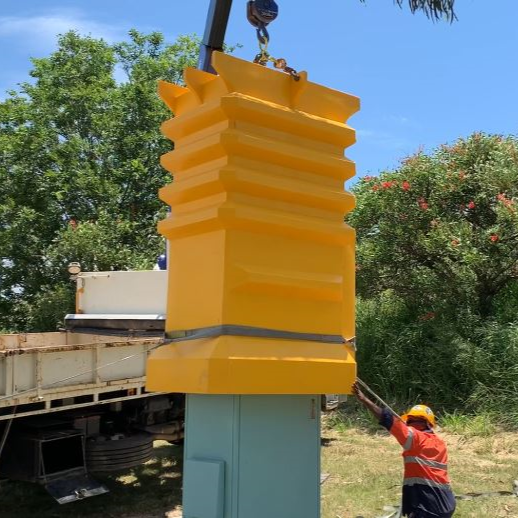Deep dive into adaptation and innovation builds flood resilience
British astronomer, mathematician, and physicist, Edmond Halley once said that humans have a great capacity for adaptability and innovation.
Engineers at Queensland’s Department of Transport and Main Roads (TMR) channelled the spirit of Halley’s words when searching for a solution in the wake of severe flooding that affected South East Queensland in 2022.
Best known for the comet that bears his name, Halley was also an inventor who, in 1690, created the dive bell.
However, for all his undoubted brilliance, Halley could not possibly have foreseen how TMR’s engineers would adapt his invention and innovate to help build flood resilience for the road network in 21st century Brisbane.
During a six-day deluge in late-February 2022 Brisbane recorded 792.8mm of rain, or 78 per cent of the city's annual average rainfall, the highest six-day total in almost 50 years.
The sustained heavy rainfall resulted in extensive severe flooding and inundated electrical cabinets housing TMR’s Intelligent Transport Systems (ITS) along key routes around Brisbane.
The ITS is critical equipment that manages traffic flow and speed, traffic signals, and road lighting on some of Brisbane's major roads.
Key routes including the Ipswich Motorway at Rocklea and Goodna, Warrego Highway at Karalee, Centenary Motorway at Jindalee, Moggill Road at Brookfield and Gateway Motorway at Taigum were badly affected.
When the water receded, TMR swung into action using on-hand maintenance spares to have all sites restored to full operation within three weeks.
However, hardware was in short supply with the widespread nature of the damage and COVID supply chain issues resulting in delays of up to 15 months for replacement cabinets.
Recognising the need to mitigate against similar damage and disruption in future flood events, TMR began investigating options to protect ITS equipment.
TMR’s initial concept involved a large, moulded cabinet, based on Halley's dive bell, that could be temporarily installed over ITS equipment.
Halley’s original concept, trapping air inside the bell by the pressure of the water at the interface to keep those inside dry, was refined to protect the covered equipment from water.
However, the prototype proved problematic with initial testing finding it would be too heavy, too costly to produce, and would not offer the desired protection.
Undeterred, TMR partnered with civil construction manufacturer Tri Underground and the University of Queensland to address the shortcomings.
Their work produced a new cabinet design based on an active pressure system powered by compressed air.
Known as Flood Tuff, the new design was vigorously tested to ensure it was fit for purpose.
Made from low density polyethylene, the same material used to construct water tanks, Flood Tuff proved it was up to the task of protecting ITS equipment from water damage in floods of up to five metres in height.
Flood Tuff units can be stored locally, deployed quickly, and are compact which allows for safe and easy installation even in difficult circumstances.
A total of 36 Flood Tuff units have been manufactured for deployment at 29 sites across TMR's metropolitan region during future flood events.
TMR will conduct annual field exercises to ensure ongoing operational training and readiness, supported by annual maintenance and a deployment manual.
The project was undertaken through the 2021–22 Betterment Program with extraordinary disaster assistance provided through the jointly funded Commonwealth-State Disaster Recovery Funding Arrangements (DRFA).





